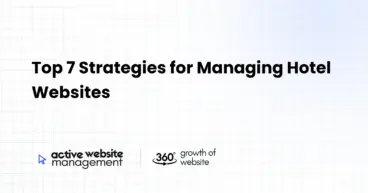December 20, 2024
8 min read
Headlines are the first impression your audience will have of your content. Whether it’s a blog post, an email, a product page, or a social media update, your headline is the deciding factor on whether someone will engage with your content or move on.
Writing compelling headlines is not just an art, it’s a science. With the right approach, you can create headlines that not only capture attention but also drive conversions. In this comprehensive guide, we’ll explore the best practices, strategies, and techniques to write headlines that convert.
1. Why Headlines Matter: The First Step in Content Engagement
Headlines are the gateways to your content. If your headline doesn’t grab attention, your content will be left unread, regardless of how valuable the information inside may be. Here’s why headlines matter:
- First Impressions Count: A good headline is the first thing a reader sees. If it doesn’t appeal to their curiosity or needs, they won’t click.
- SEO Benefits: A well-crafted headline is not just a hook—it’s an opportunity for SEO. Using the right keywords in your headlines can boost your content’s visibility on search engines, making it easier for your target audience to find.
- Increases Click-Through Rate (CTR): The headline is the primary factor influencing your click-through rate (CTR). A strong, engaging headline can significantly improve how many people click through to read your full content.
- Establishes Credibility: A headline that’s clear, informative, and compelling can make you seem more professional, trustworthy, and knowledgeable, which encourages readers to engage further with your brand.
- Emotional Trigger: Great headlines tap into emotions—curiosity, urgency, fear of missing out (FOMO), or the promise of something valuable. They can immediately draw in readers.
2. Types of Headlines That Work
There are several types of headlines that have proven to increase engagement. Understanding these will help you create the most effective headline for your content.
1. The Question Headline
Why it works: People love to find answers. A question headline directly addresses the reader’s curiosity or pain point, compelling them to click to find the solution.
Example:
- “How Can You Optimize Your Website for Maximum Speed?”
- “Are You Making These Website Maintenance Mistakes?”
Best Practices:
- Make the question specific to your target audience’s needs.
- Keep the question intriguing but relevant to the content that follows.
Don’t Just Maintain Your Website—
Grow It using Active Website Management! Don't Wait for Growth—Accelerate It with Active Website Management
2. The “How-To” Headline
Why it works: “How-to” headlines promise value. They show the reader that by reading your content, they will learn something useful. These headlines imply that there is a step-by-step process for achieving a goal.
Example:
- “How to Improve Your Website’s SEO in 5 Easy Steps”
- “How to Write Headlines That Drive Traffic”
Best Practices:
- Use numbers when possible. “5 Tips” or “7 Ways” make the process feel manageable.
- Offer a clear, actionable solution.
3. The List Headline
Why it works: People love lists. They make content easier to digest and show the reader exactly what they’ll get in return for their time.
Example:
- “10 Proven Strategies to Increase Your Website’s Conversion Rates”
- “7 Essential WordPress Maintenance Tips You Should Know”
Best Practices:
- Use odd numbers (they tend to attract more attention).
- Be specific about what’s included in the list.
4. The Urgency Headline
Why it works: Urgency motivates action. This headline type plays on the reader’s fear of missing out (FOMO). By suggesting that the reader must act quickly, you encourage them to click immediately.
Example:
- “Hurry! Last Chance to Get 30% Off Your Website Maintenance”
- “Don’t Miss Out: 24-Hour Sale on All Website Management Plans”
Best Practices:
- Make sure the urgency is real (don’t overuse this technique, or it will lose its effect).
- Use words like “limited time,” “only today,” or “last chance” to emphasize urgency.
5. The “Problem/Solution” Headline
Why it works: This headline type presents a problem the reader is facing and immediately promises a solution, which is very effective for driving clicks.
Example:
- “Is Your Website Too Slow? Here’s How to Speed It Up”
- “Struggling with Website Downtime? Learn How to Fix It Now”
Best Practices:
- Focus on a real problem your audience is experiencing.
- Ensure the solution is something you can deliver within the content.
6. The Benefit-Driven Headline
Why it works: This headline promises the reader something they will gain by reading your content. It’s straightforward and clear.
Example:
- “Increase Your Site’s Speed by 50% with These Simple Tips”
- “Boost Your SEO Rankings with Minimal Effort”
Best Practices:
- Make the benefit specific and measurable.
- Highlight the most attractive result or reward that your audience will get.
7. The “Command” Headline
Why it works: Command headlines direct the reader to take an action. These headlines give the reader a clear call to action (CTA) and can be very effective in certain contexts, especially for conversion-focused content.
Example:
- “Download Our Free Website Maintenance Checklist”
- “Start Your Free Website Audit Now”
Best Practices:
- Use strong action verbs.
- Be clear about what the reader should do next.
3. Key Principles of Writing Headlines that Convert
1. Use Numbers and Specificity
People are drawn to numbers because they provide clarity and structure. Headlines with numbers like “5 Tips,” “7 Ways,” or “10 Reasons” tend to perform better than those without. Specific numbers suggest that the content is well-researched and organized.
For example, compare:
- “How to Improve Your Website’s SEO” vs. “5 Easy Ways to Improve Your Website’s SEO Today”
The second option is more specific, which makes it more appealing.
2. Keep It Short and Sweet
You have limited space to grab attention. Ideally, your headline should be between 6 to 10 words. If it’s too long, it risks getting cut off in search engine results or social media previews.
Don't Wait for Growth—Accelerate It with
Active Website Management Don't Wait for Growth—Accelerate It with Active Website Management
3. Incorporate Power Words
Power words trigger an emotional response and can increase the effectiveness of your headlines. Words like “amazing,” “ultimate,” “proven,” and “secrets” generate excitement and curiosity.
Example:
- “Unlock the Ultimate Guide to Website Optimization”
- “Discover Proven Strategies for Effective Website Management”
4. Include Keywords for SEO
For headlines to be search engine-friendly, they should contain relevant keywords that match what your audience is searching for. This helps with both search visibility and CTR.
You can learn more about optimizing your website’s performance and SEO with our How to Optimize WordPress Speed blog post.
5. Use Emotional Triggers
Emotional triggers like urgency, fear, or curiosity can push someone to click. By making readers feel like they’re missing out on something valuable, you create the motivation they need to act.
For example:
- “Is Your Website Ready for the Holidays? Find Out Now!”
- “Don’t Miss These 5 Secrets to Better Website Performance”
6. Test and Refine
Headline optimization is not a one-time task. You should test different versions of your headlines to see which one performs best. Use tools like A/B testing to experiment with slight variations and measure which version drives the most engagement.
4. Active Website Management: How It Relates to Headlines and Conversions
If you’re in the business of website management, understanding the role of headlines in driving conversions is critical. At Active Website Management, we help businesses grow by continuously optimizing their websites. A key part of this process is using effective headlines that lead to more clicks, better user engagement, and ultimately, more conversions.
Whether you’re selling products or services, the right headline can make all the difference in attracting visitors to your website. Through our managed website services, we help businesses optimize their content, SEO, and website performance, ensuring every aspect of your site works in harmony to drive results.
How Active Website Management Can Help with Content Optimization
Active Website Management provides tailored strategies to optimize your website’s overall performance, including regular updates, SEO enhancements, content improvement, and headline testing. We create a strategy for your business to make sure your headlines, copy, and content always align with your marketing goals.
You can learn more about how our services can help you with website optimization and improve your site’s overall performance by reading our Caching in Website Performance article.
Each platform—whether it’s social media, your website, or email—has its own headline dynamics. The way you write a headline should depend on the platform where it will appear. Here are a few tips:
- Keep it catchy and concise.
- Use hashtags when appropriate to make your post discoverable.
- Emojis can sometimes help add personality, but don’t overdo it.
Blog Headlines
- Focus on clarity and promise actionable value.
- Use long-tail keywords for SEO purposes.
Email Subject Lines
- Create urgency without being overly salesy.
- Personalize when possible to increase open rates.
6. Conclusion
Writing headlines that drive clicks and conversions is a skill that can be developed with practice. By understanding the psychology behind effective headlines, using emotional triggers, incorporating power words, and testing your approaches, you can craft headlines that resonate with your audience and compel them to act.
Remember, your headline is the first and most important step in getting someone to engage with your content. So, invest the time and effort into creating headlines that don’t just inform—but inspire.
Start experimenting with the headline techniques outlined above, and you’ll see an improvement in your content’s performance in no time.





